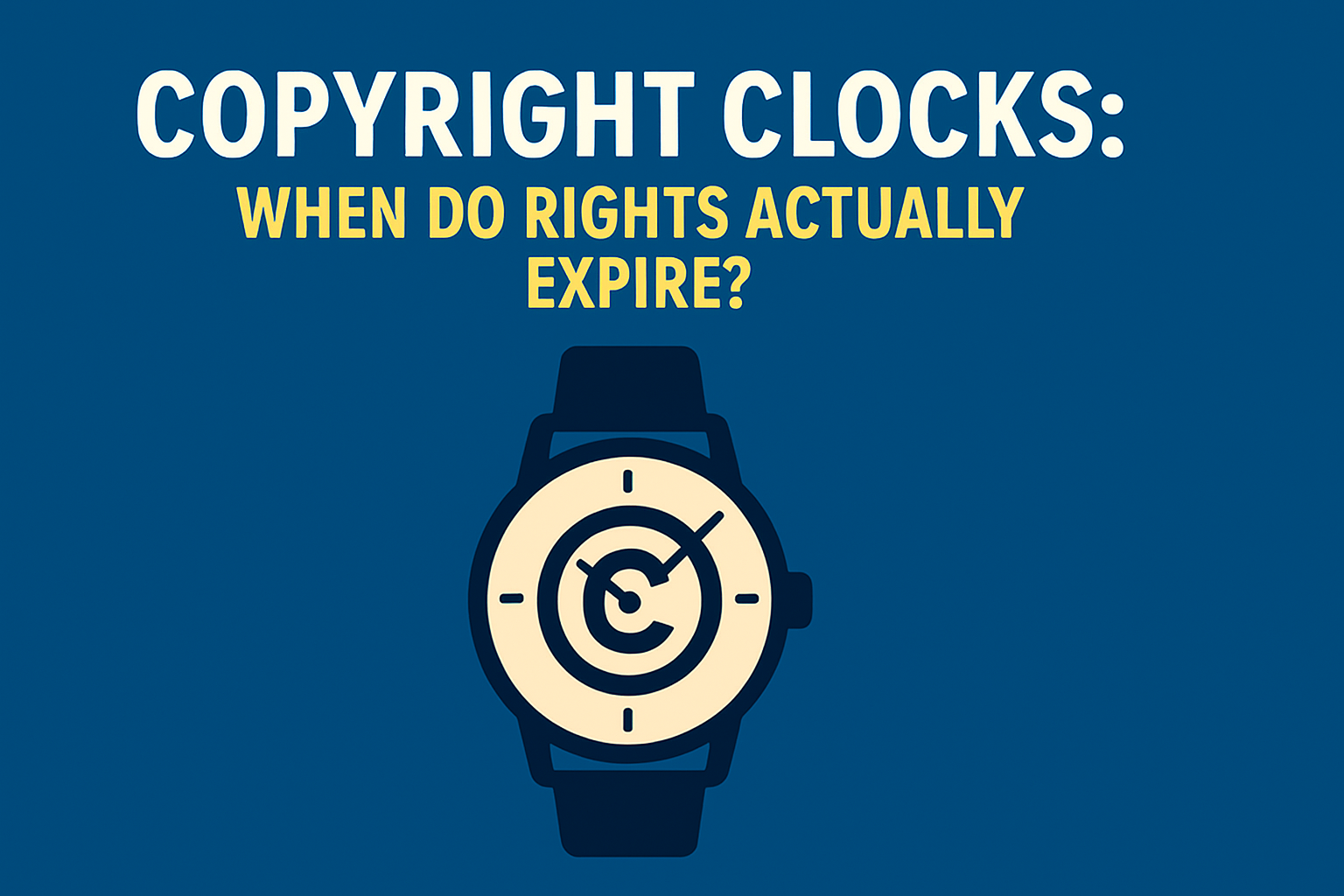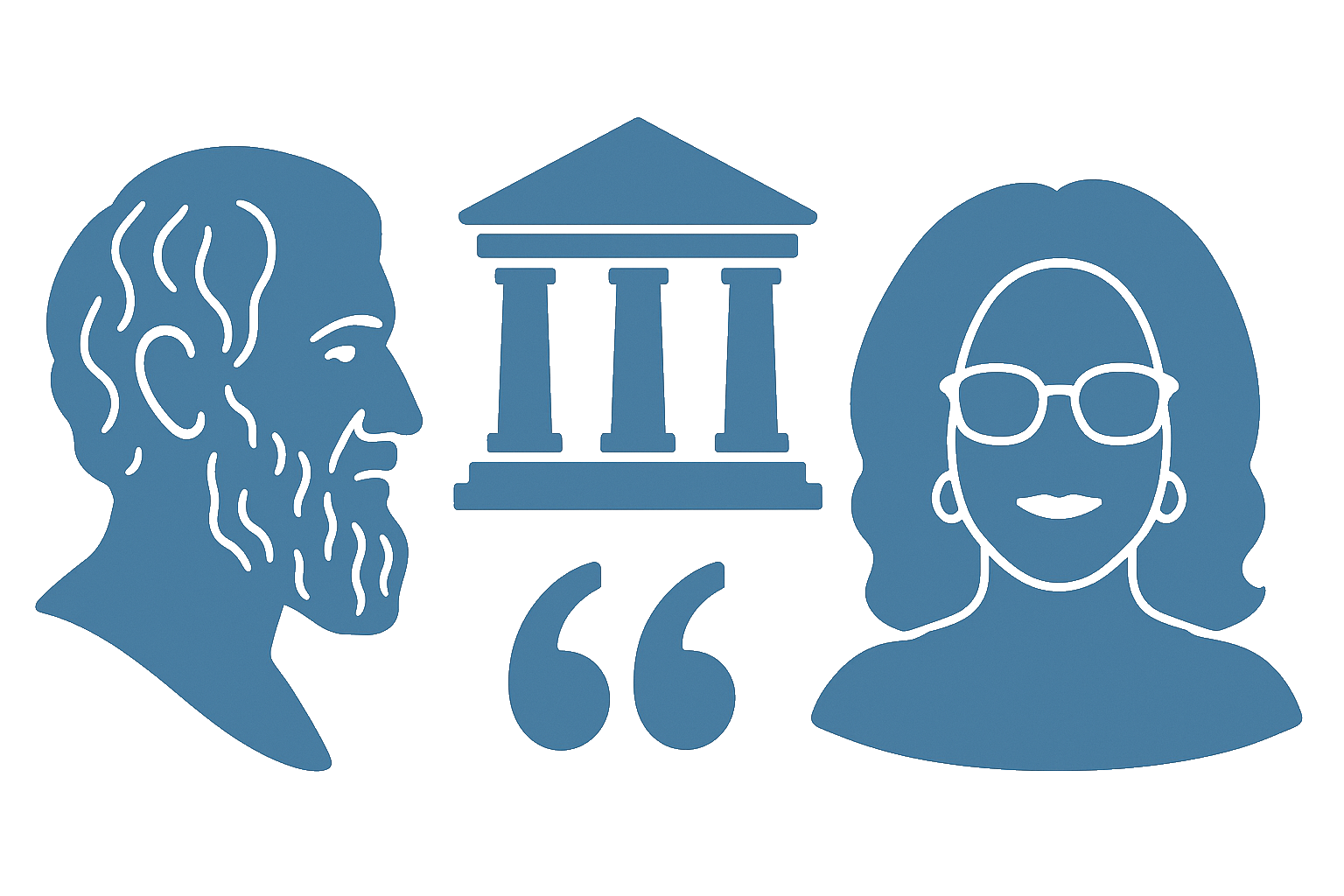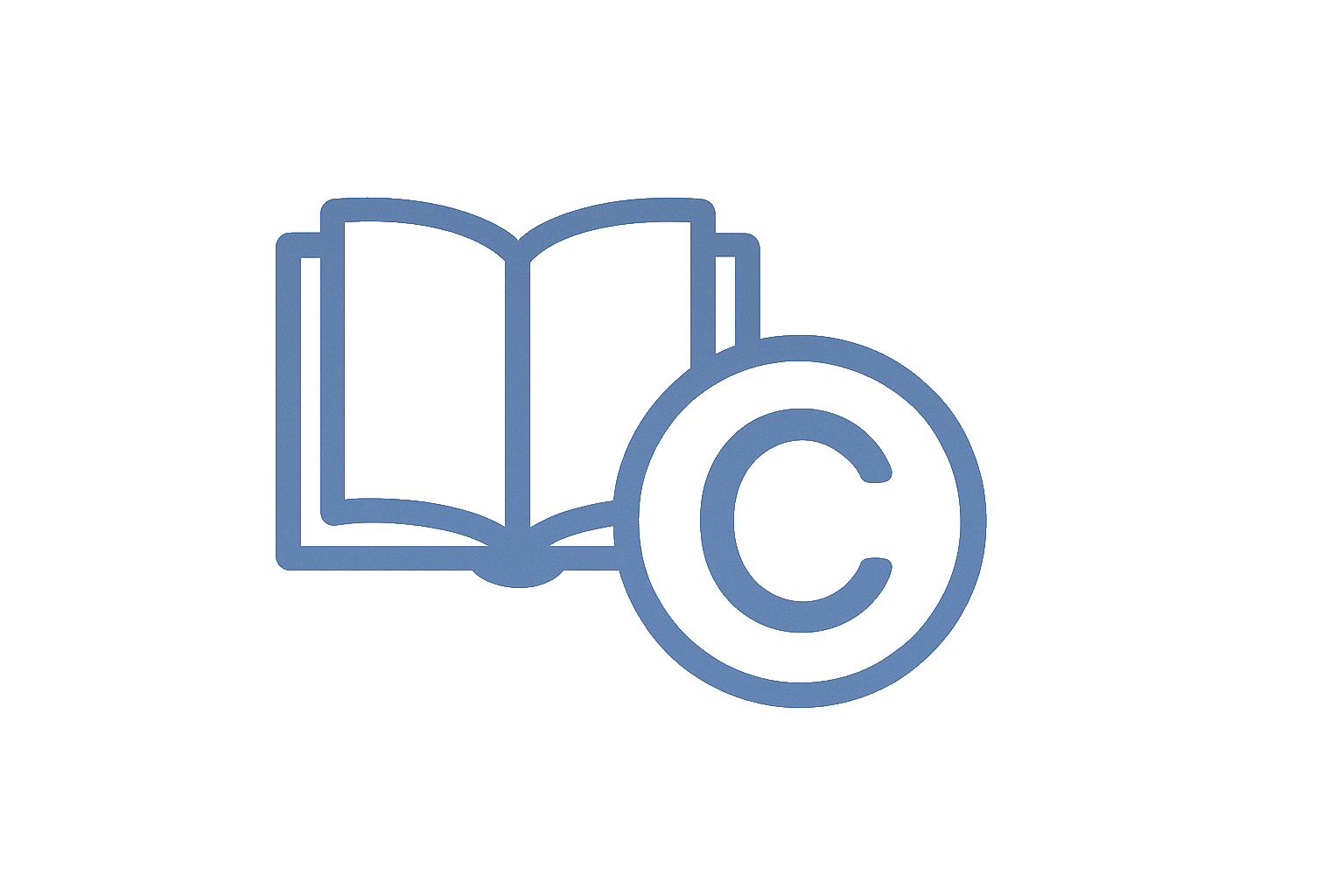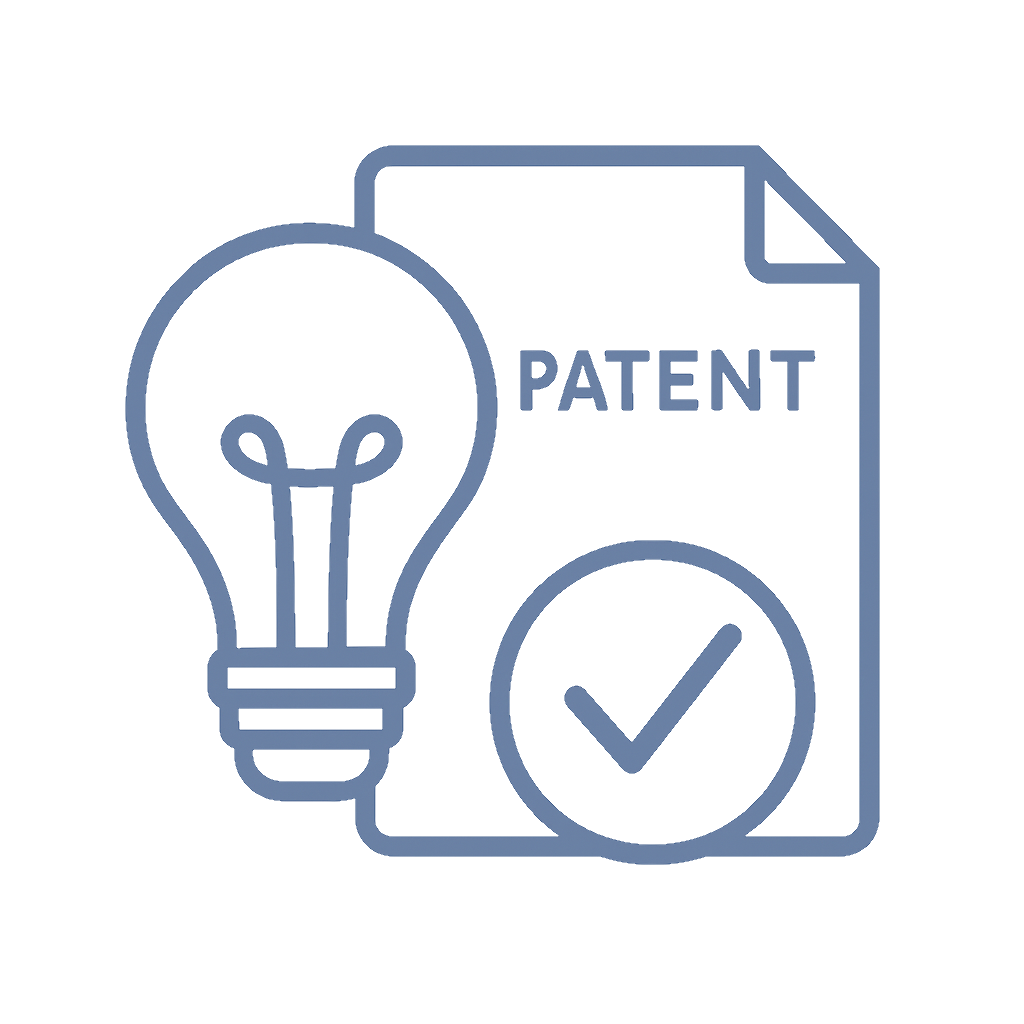📌 Quick Summary
1-Sentence Answer
Creative works in the U.S. enter the public domain depending on when they were published—before 1923 means free to use, after that… well, it’s complicated.
The Article Overview
This article unpacks how long copyright protections last based on publication date, creation date, and author lifespan. It walks you through key timelines, real-world examples, and legal implications—plus busts a few copyright myths along the way.
❓ Common Questions & Answers
Q: When do U.S. copyrights expire?
A: If published before 1923, the work is in the public domain. If published between 1923–1977, copyright lasts 95 years. Created after 1978? It’s life of the author + 70 years.
Q: What if the author is anonymous or unknown?
A: Then copyright typically lasts 95 years from publication or 120 years from creation—whichever is shorter.
Q: Can I republish a book from 1922?
A: Absolutely! It's in the public domain, so you're free to print, adapt, or turn it into a podcast featuring dramatic animal voices.
Q: Do copyright laws apply globally?
A: Not quite—every country has its own laws, but international treaties like the Berne Convention help standardize some protections.
Q: What if something was never published?
A: If it was created before 1978 and unpublished, it's protected for the life of the author + 70 years.
📜 Step-by-Step Guide
1. Identify the creation date
Start by figuring out when the work was created and/or published—this will dictate the copyright duration.
2. Use the “1923 rule”
If the work was published before 1923, it's in the public domain—no permission needed.
3. Use the 95-year rule
Published between 1923–1977? Copyright lasts 95 years. Time to do some light math.
4. Use the life + 70 years rule
For works created after 1978, the clock starts ticking when the author dies—and keeps ticking for 70 years.
5. Confirm publication status
Unpublished works follow different rules. Confirm whether the work was released to the public.
6. Double-check legal status
Use copyright lookup tools or check with a lawyer (hello, Miller IP Law!) to be absolutely sure.
📖 Historical Context
Copyright laws in the U.S. have changed dramatically over time. When Congress passed the first U.S. Copyright Act in 1790, it offered just 14 years of protection (renewable once). By 1909, lawmakers expanded it to 28 years, with a 28-year renewal—totaling 56 years of protection.
But things got complicated with the Copyright Act of 1976, which overhauled the system. This act standardized protections and extended durations, especially for newer works. It introduced the “life of the author + 50 years” rule, which was extended to 70 years under the Sonny Bono Copyright Term Extension Act in 1998.
This extension, sometimes dubbed the “Mickey Mouse Protection Act,” aimed to protect large corporate rights-holders like Disney. Now, modern works have longer protections than ever before. But this has led to debates around innovation and public access—after all, how long is too long?
🏢 Business Competition Examples
1. Disney and Public Domain
Disney’s original “Steamboat Willie” entered the public domain in 2024, sparking public excitement—and caution from Disney’s legal team.
2. Project Gutenberg
Project Gutenberg thrives by digitizing public domain books—mostly pre-1923 gems—and offering them free to the world.
3. Musicians Sampling Public Domain Tracks
Modern musicians often tap into public domain songs from the early 20th century to create royalty-free remixes.
4. Filmmakers Adapting Classic Novels
Film studios regularly adapt public domain books (like Frankenstein or Dracula) into new content without paying a cent in royalties.
💬 Discussion Section
Copyright law is a strange cocktail of logic, politics, and nostalgia. While it’s meant to protect creators, it’s also accused of overextending itself—delaying works from enriching the public domain.
Before 1923? You’re in the clear. After that, it’s time to do some arithmetic or lawyer-up. The 95-year rule has made many think twice before republishing old materials. And “life + 70” ensures a creator’s grandkids might benefit—but it also ties up cultural assets for decades.
Public domain isn’t just about access; it’s about creativity. Some of the most iconic modern works are based on public domain content. Think of Sherlock Holmes, King Arthur, or the dozens of A Christmas Carol spin-offs. The ability to reuse and remix old works fuels innovation—but only if the works are actually free to use.
And yet, the law’s complexity leaves many unsure. Can I read this old poem on my podcast? Can I resell a vintage movie poster? This is where IP firms like Miller IP Law step in—making the legal jargon digestible and helping you avoid an accidental copyright lawsuit over a 1920s jingle.
⚖️ The Debate
FOR longer copyright terms:
Supporters say it protects creators and incentivizes long-term artistic investment. If people know their work is safeguarded for life (plus their family gets 70 years of royalties), they’re more likely to create.
AGAINST longer copyright terms:
Critics argue that overly long terms hinder innovation, limit educational use, and delay access to cultural assets that could enrich society.
✅ Key Takeaways
-
Works published before 1923 are in the public domain.
-
Works from 1923–1977 are protected for 95 years.
-
Post-1978 works are protected for the life of the author + 70 years.
-
Unpublished works follow their own rules.
-
Always verify copyright status before using a work.
⚠️ Potential Business Hazards
-
Accidentally infringing on still-protected works
-
Misunderstanding “anonymous” or “corporate” authorship rules
-
Assuming foreign works follow U.S. timelines
-
Using copyrighted material in commercial settings without permission
❌ Myths & Misconceptions
-
“It’s old, so it must be public domain.” (Wrong!)
-
“If I credit the author, I can use it.” (Nope.)
-
“I found it online, so it's free to use.” (Dangerous myth.)
-
“Copyright expires after 50 years.” (Only true in some countries.)
-
“AI-generated works can be copyrighted.” (Not currently in the U.S.)
📚 Book & Podcast Recommendations
-
Book: Free Culture by Lawrence Lessig — https://www.free-culture.cc/
-
Book: Understanding Copyright Law by Marshall Leaffer — https://www.westacademic.com/Understanding-Copyright-Law-9781531014217
-
Podcast: Copyright & Coffee — https://www.copyrightandcoffee.com
-
Podcast: IP Fridays — https://www.ipfridays.com/
⚖️ Legal Cases
-
Golan v. Holder (2012) – https://supreme.justia.com/cases/federal/us/565/302/
Upheld Congress’s power to restore copyright on foreign works. -
Eldred v. Ashcroft (2003) – https://www.oyez.org/cases/2002/01-618
Confirmed the constitutionality of the Sonny Bono Copyright Term Extension Act. -
ABC v. Aereo (2014) – https://www.oyez.org/cases/2013/13-461
Addressed broadcast streaming and copyright in the digital era. -
Steamboat Willie Entry into Public Domain (2024) – https://www.nytimes.com/2024/01/01/business/media/mickey-mouse-public-domain.html
Major cultural moment symbolizing shifting copyright frontiers.
📣 Expert Invitation
Want to know if your creative project is copyright-safe? Schedule a free consult with the legal team at http://inventiveunicorn.com and we’ll help you avoid costly missteps—without boring you to sleep with legalese.
🔚 Wrap-Up Conclusion
Copyright clocks may tick slowly, but understanding them is key to avoiding legal landmines and unleashing your creativity. Whether you’re remixing old tunes, digitizing dusty novels, or scripting a sequel to Sherlock Holmes—know what’s public domain, and what still belongs to someone else. And if in doubt, Miller IP Law has your back.











